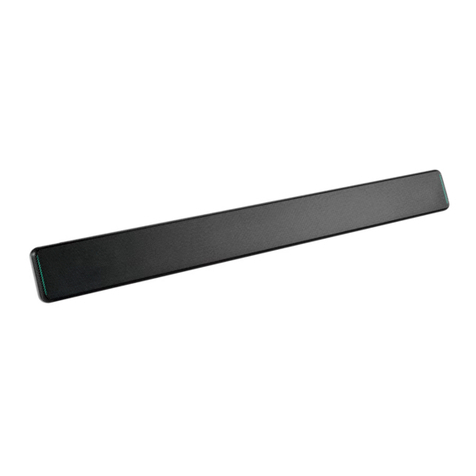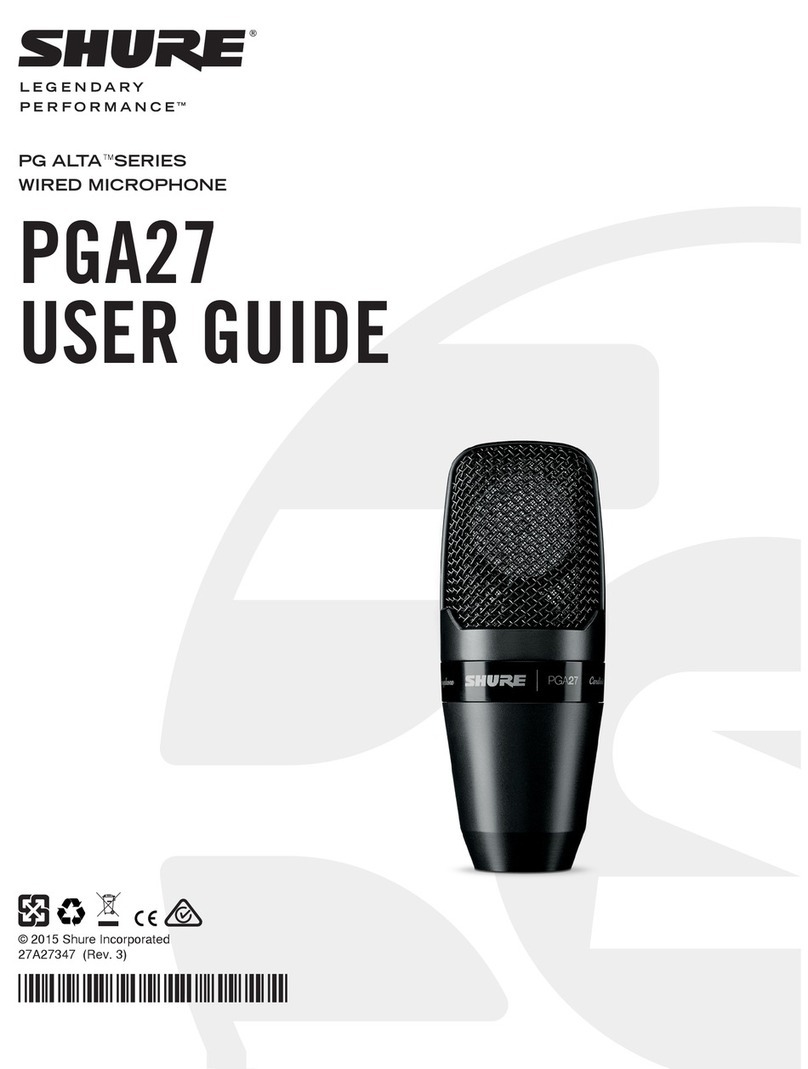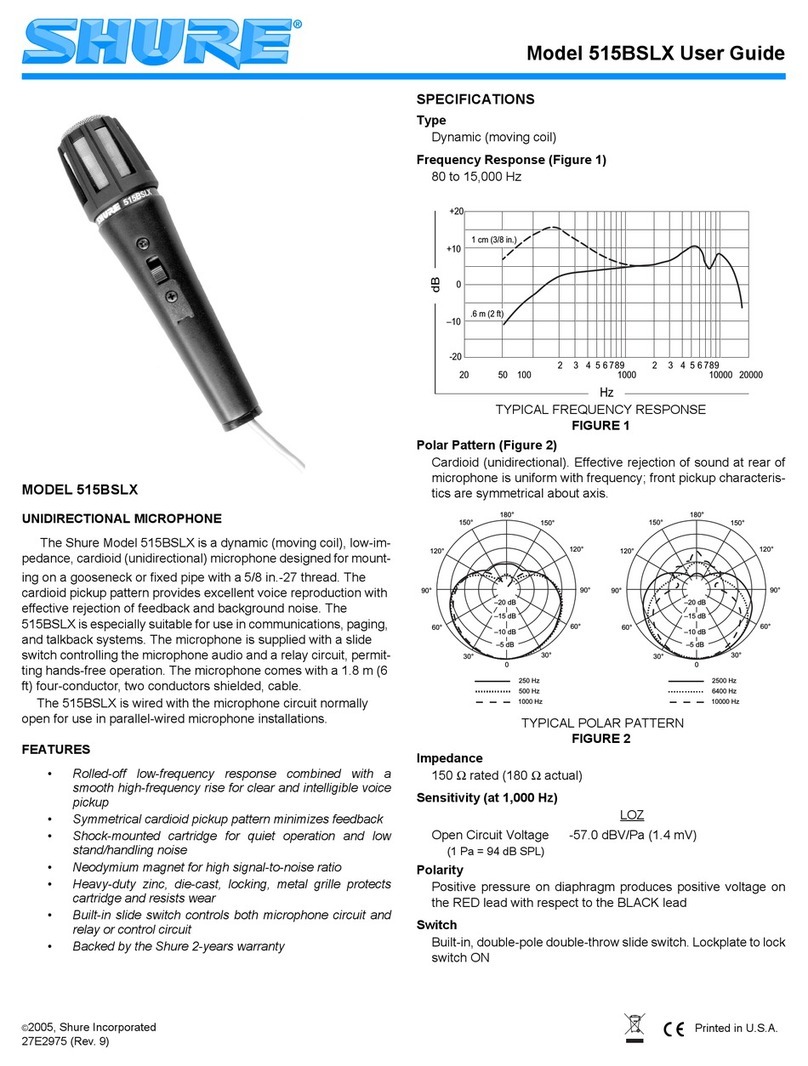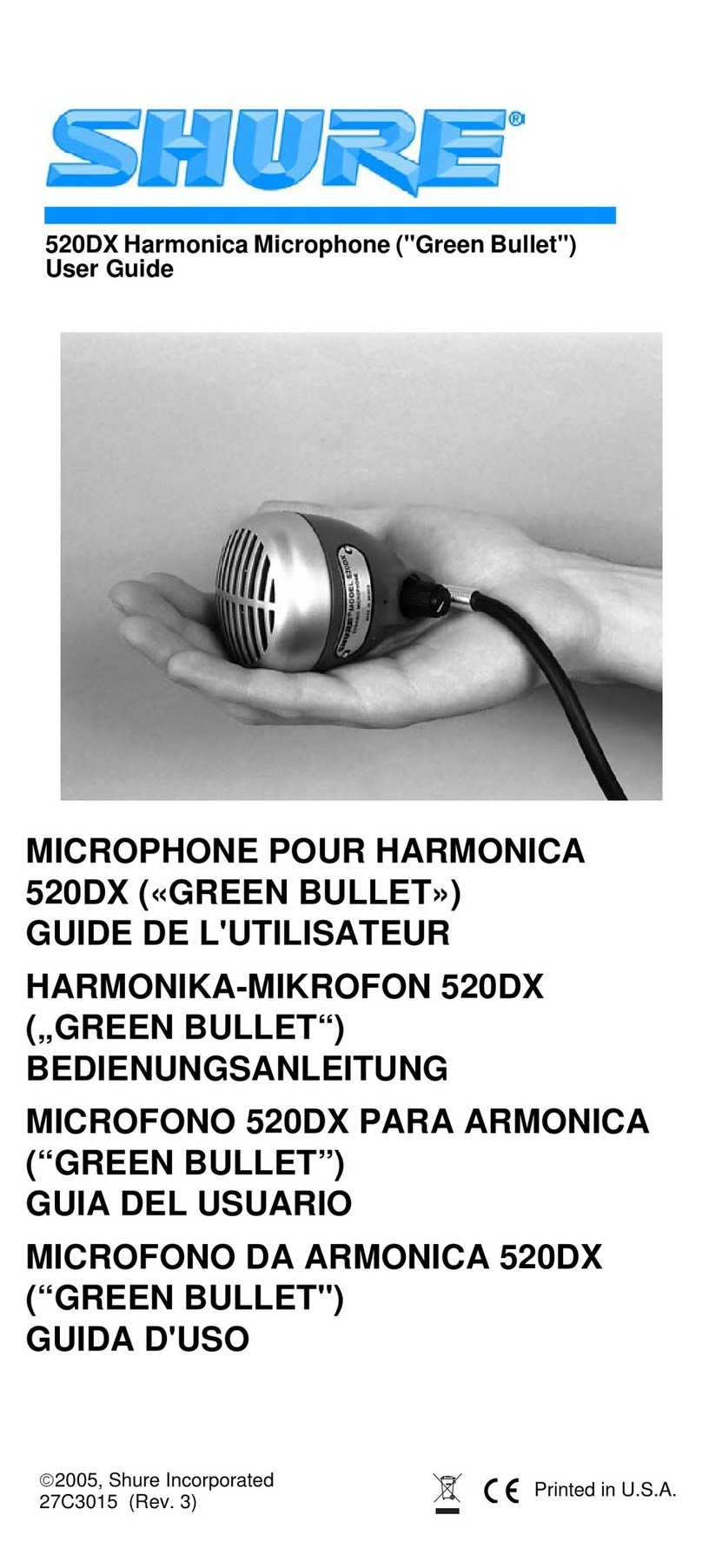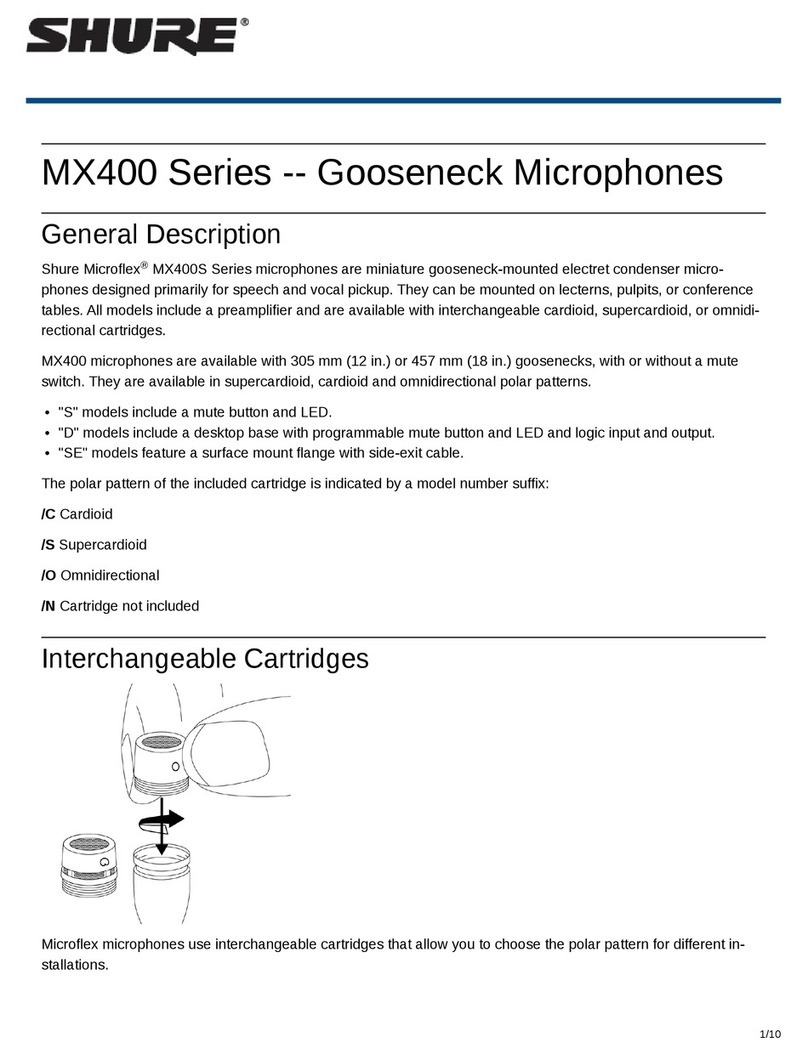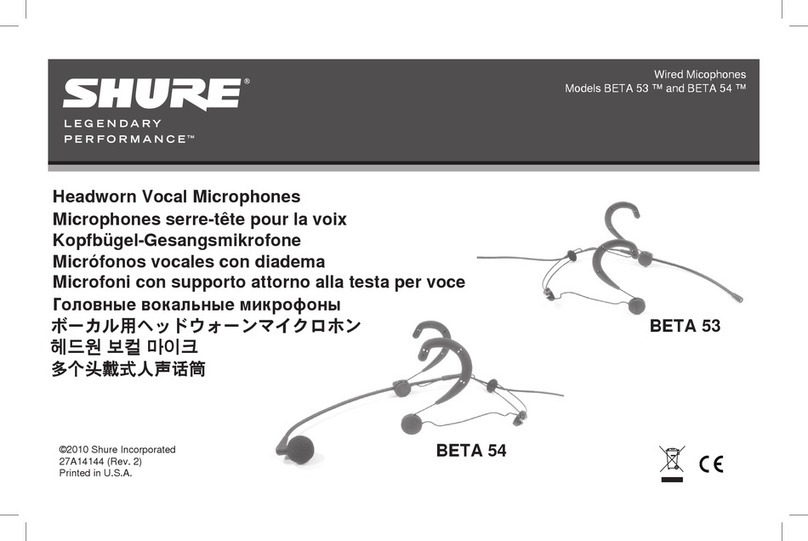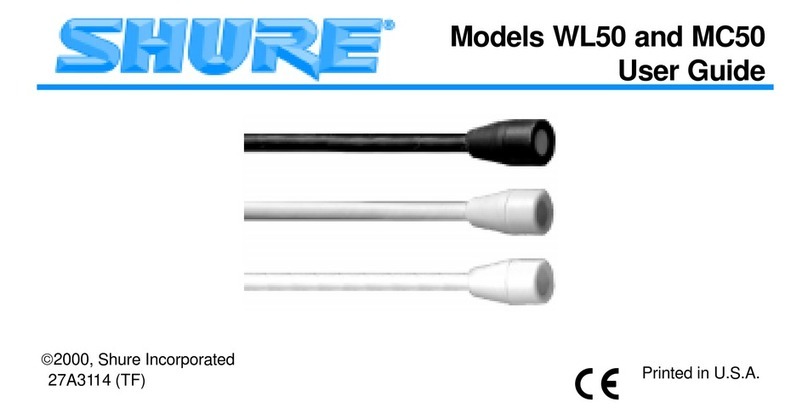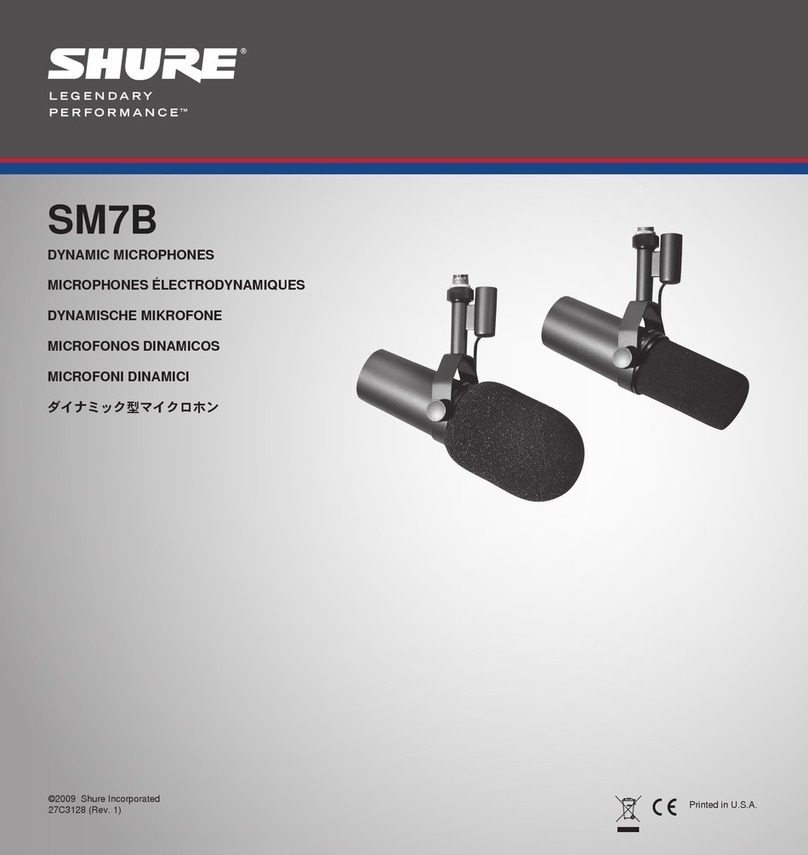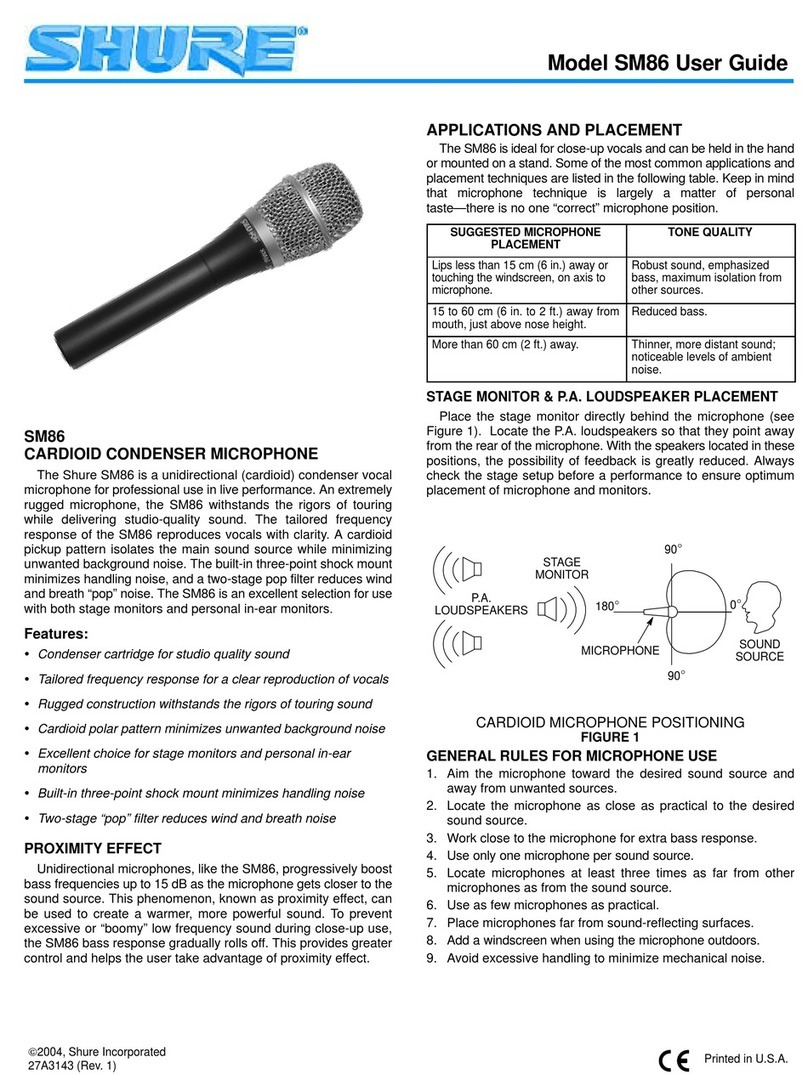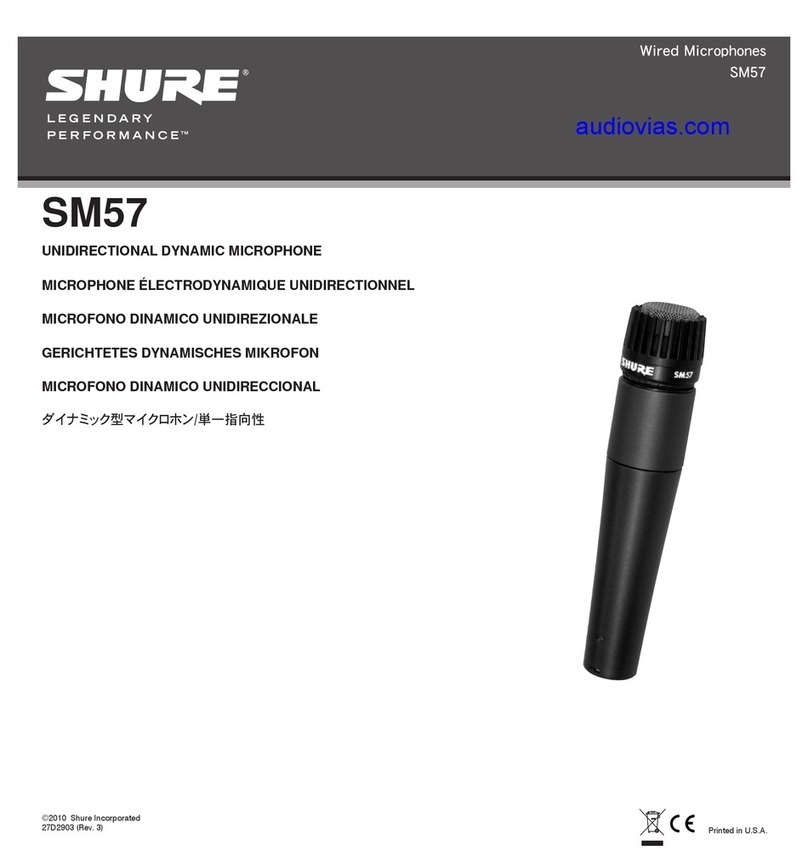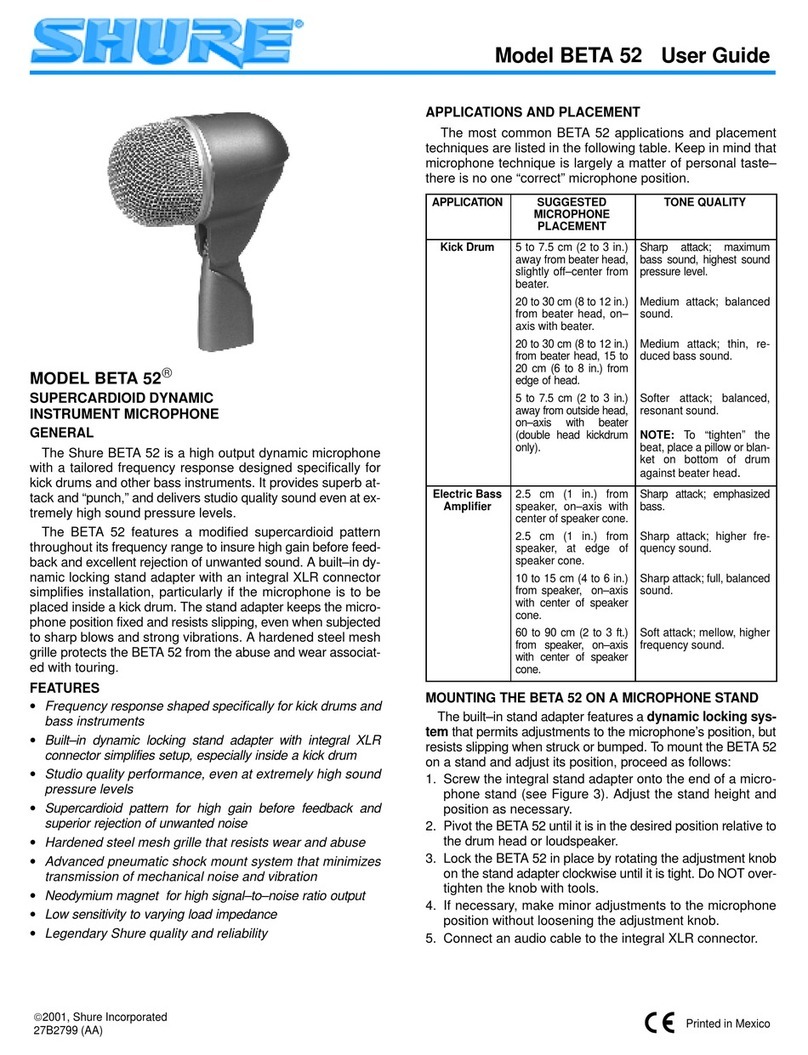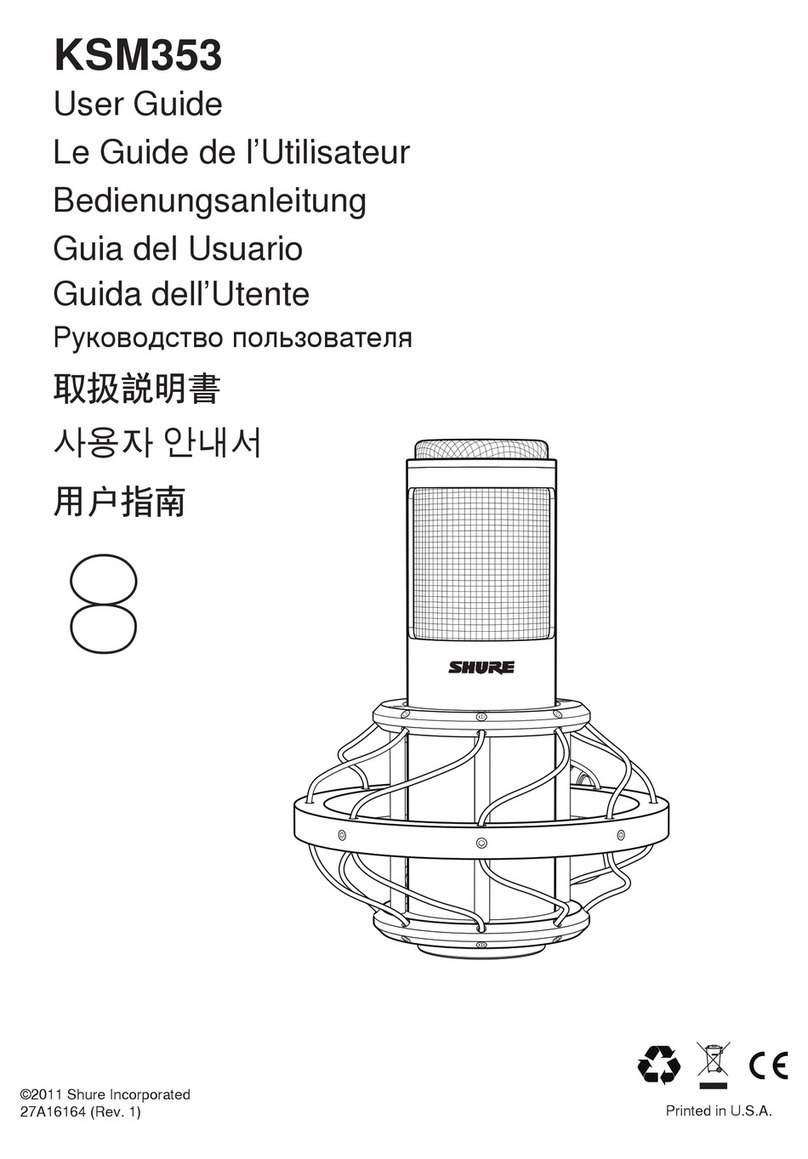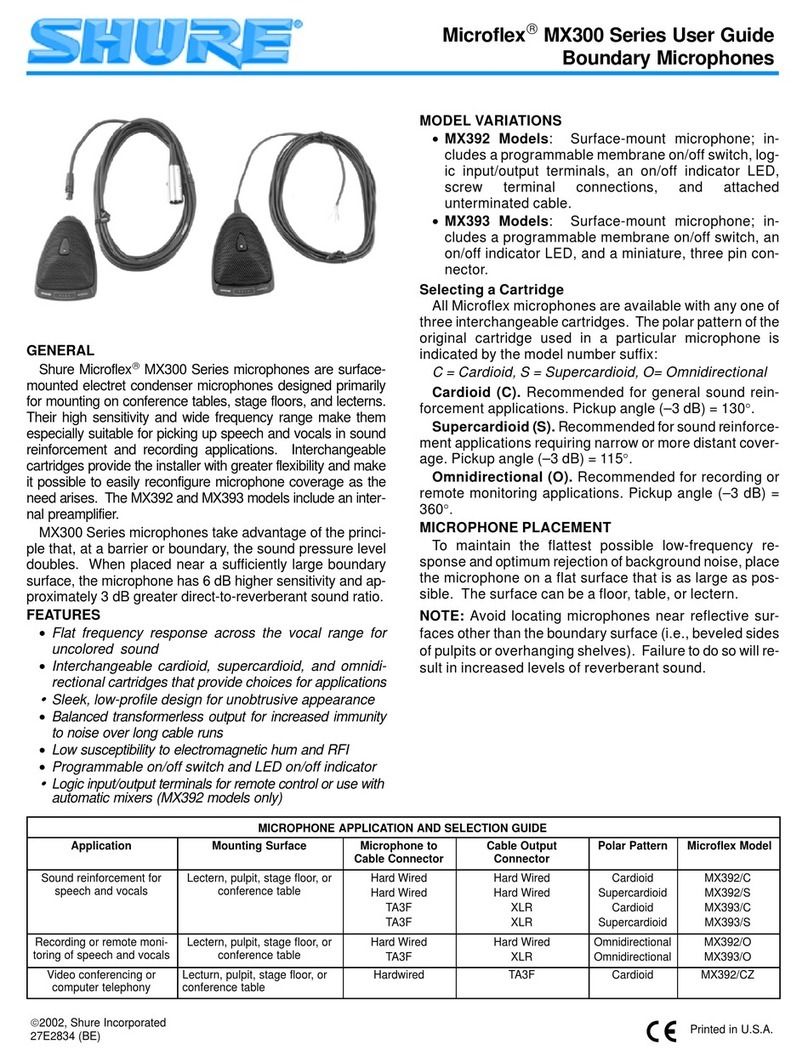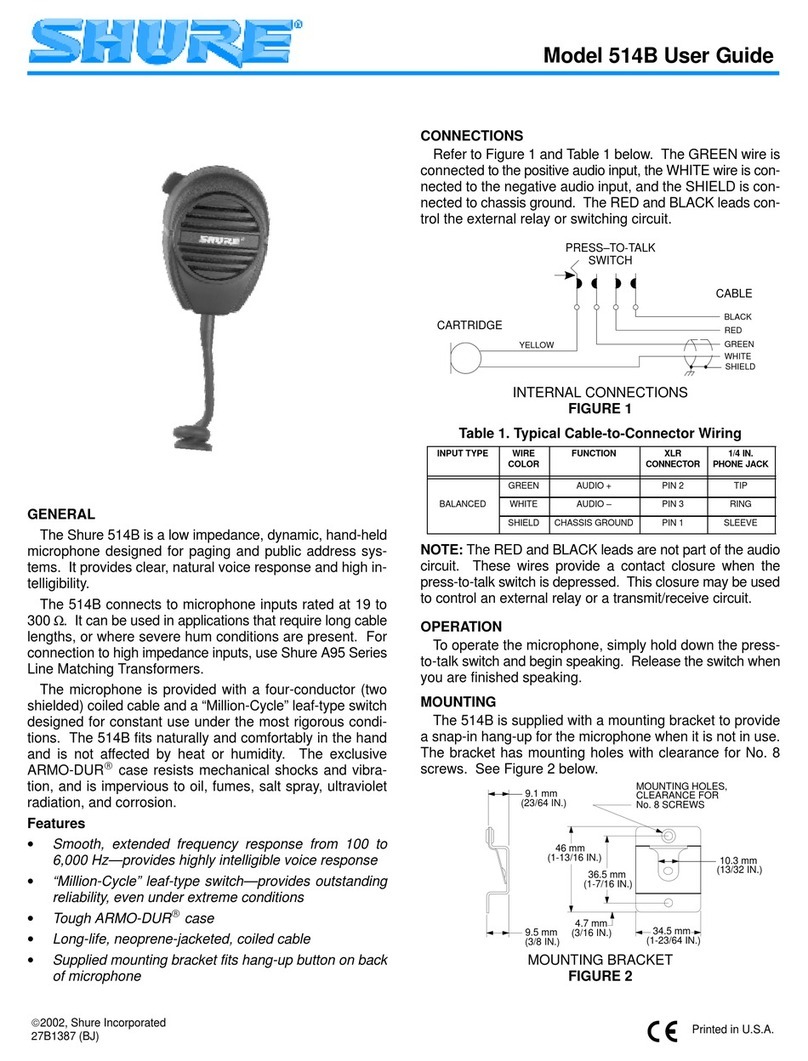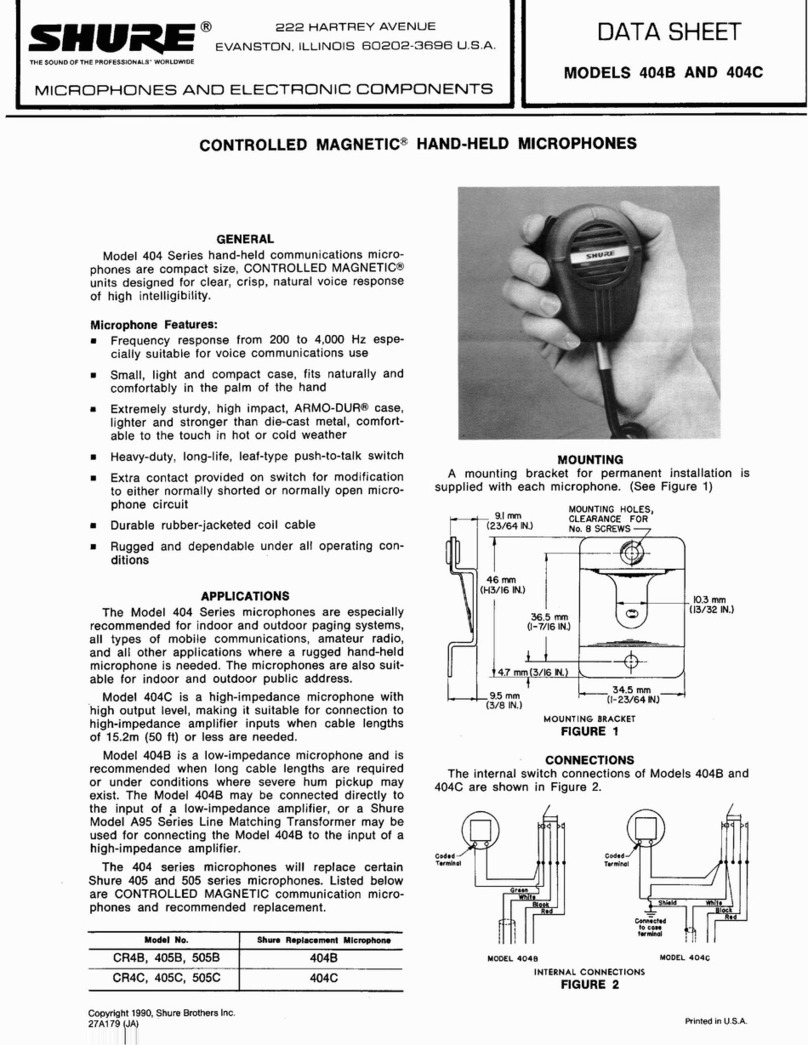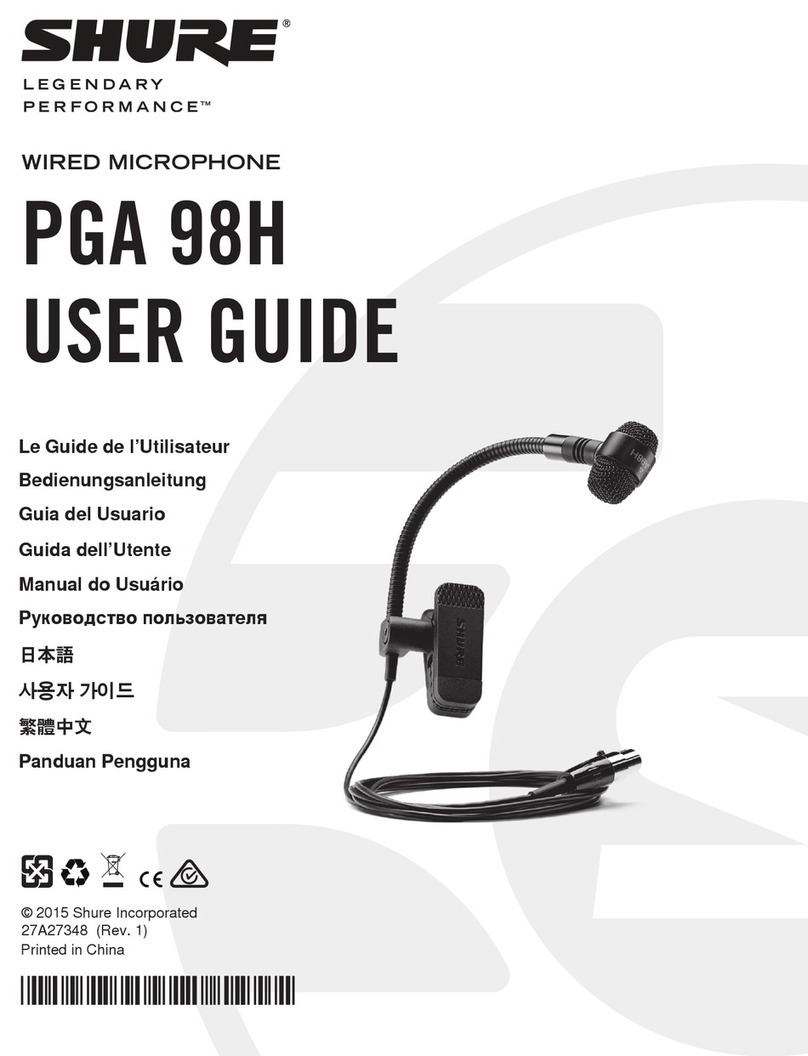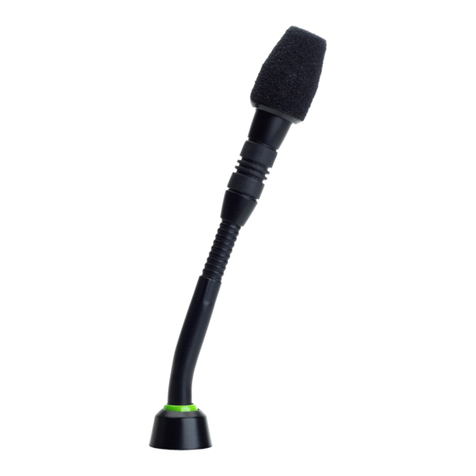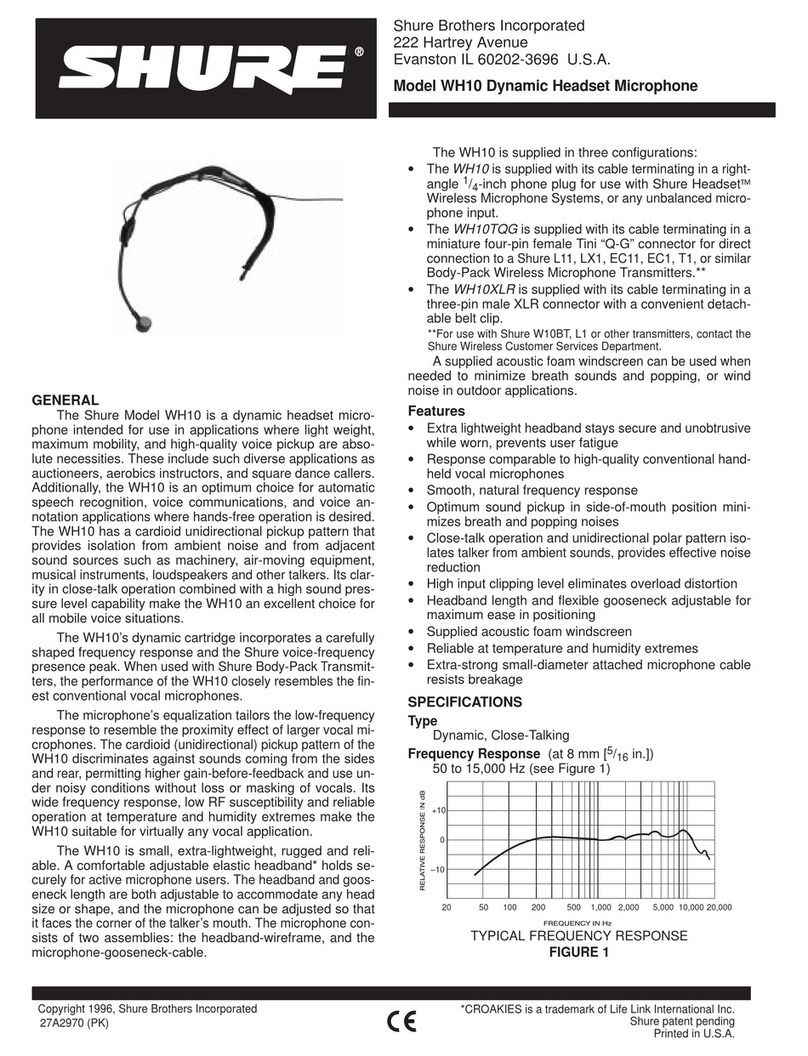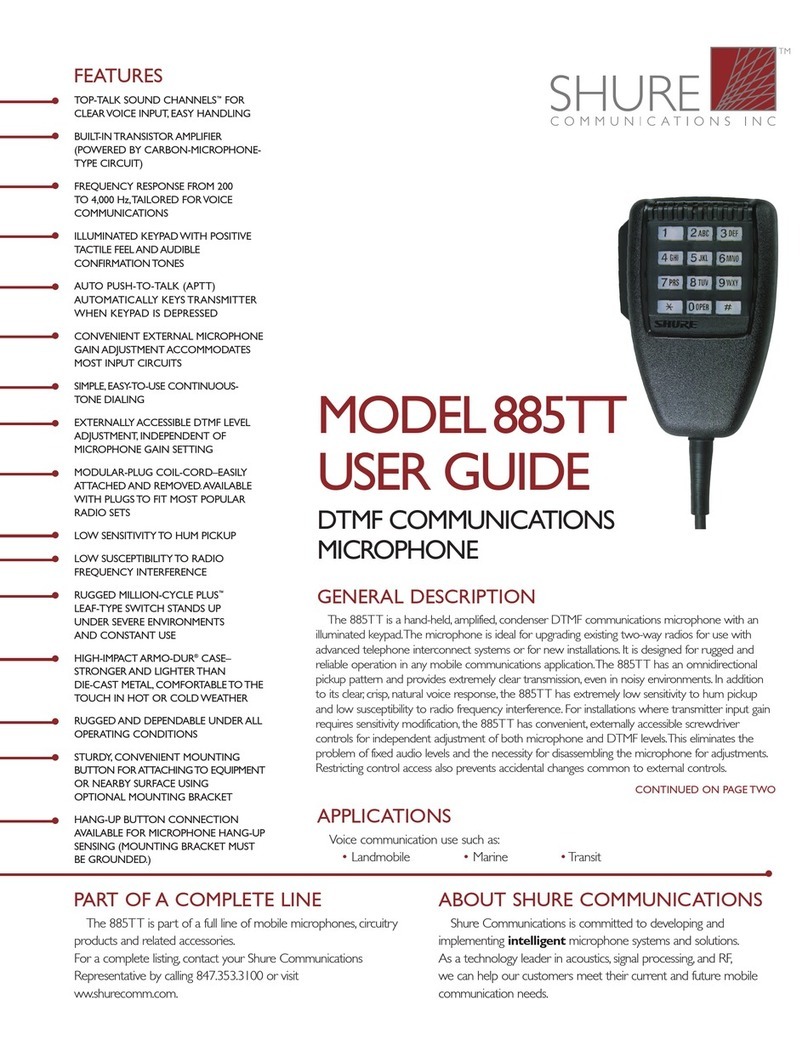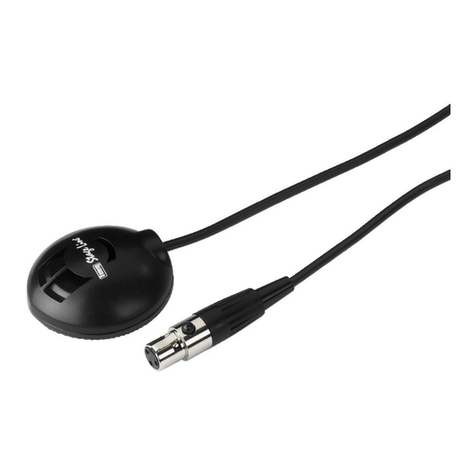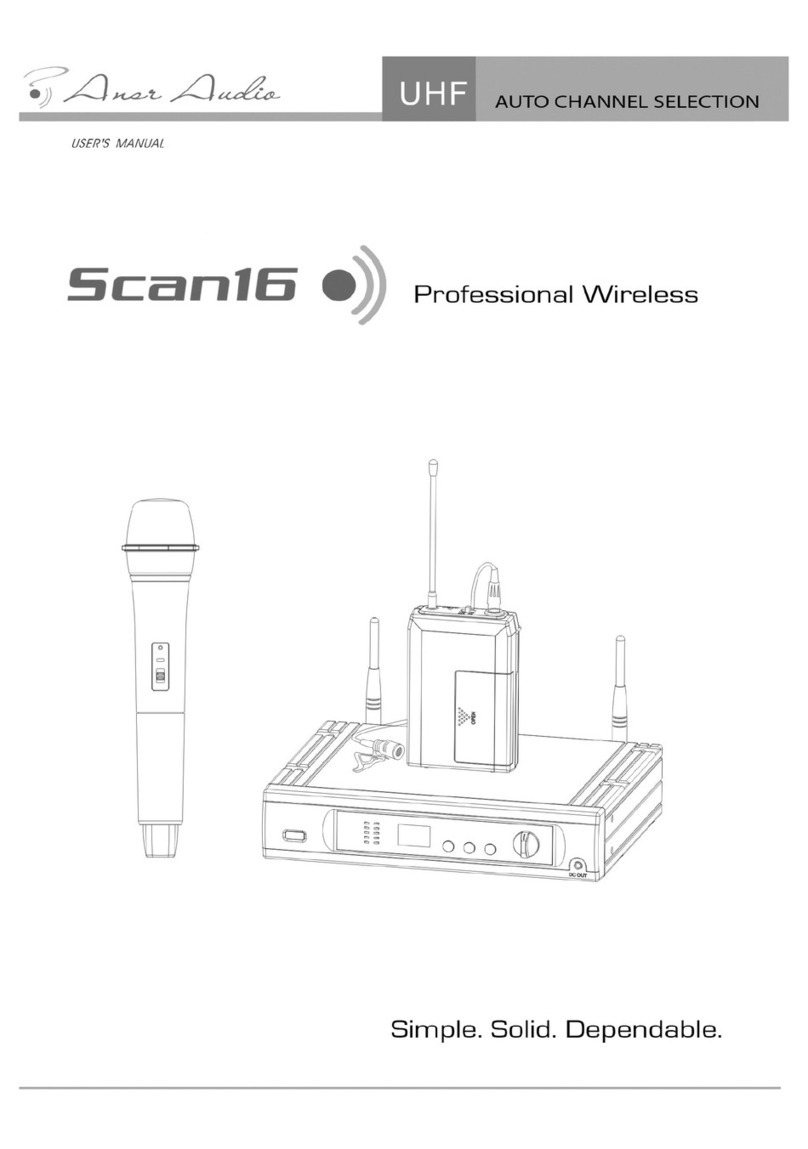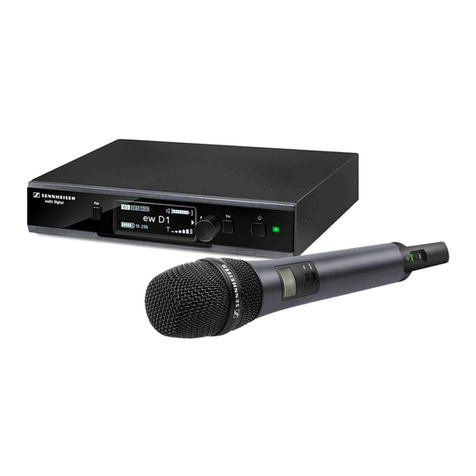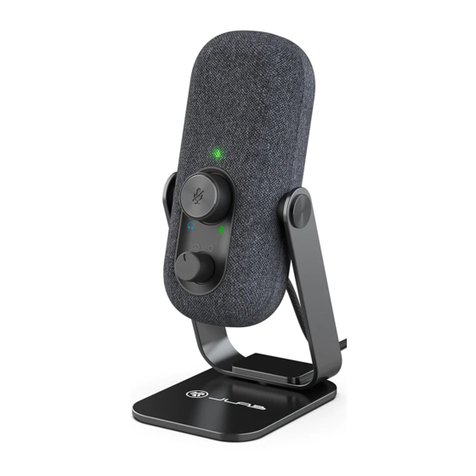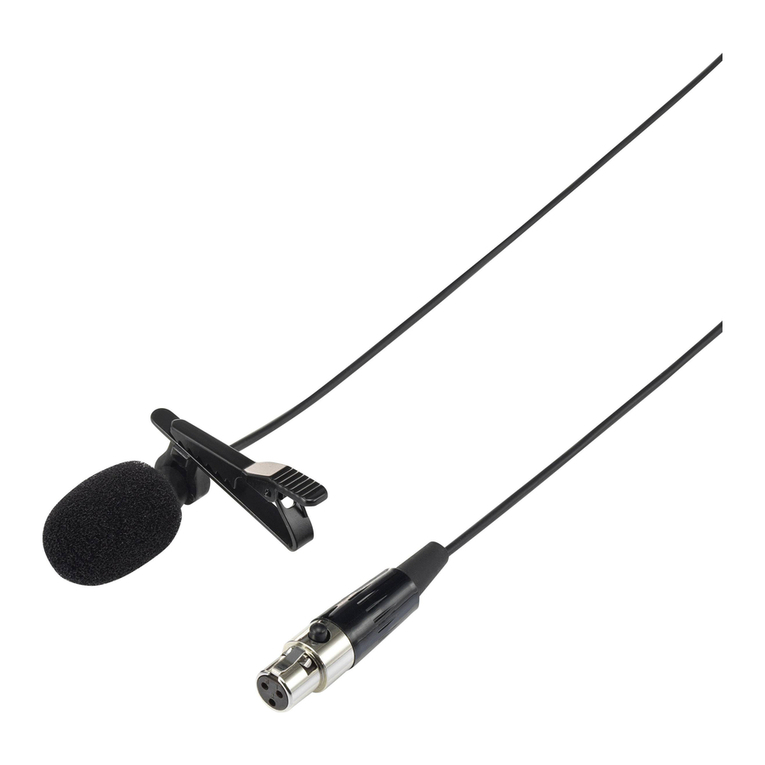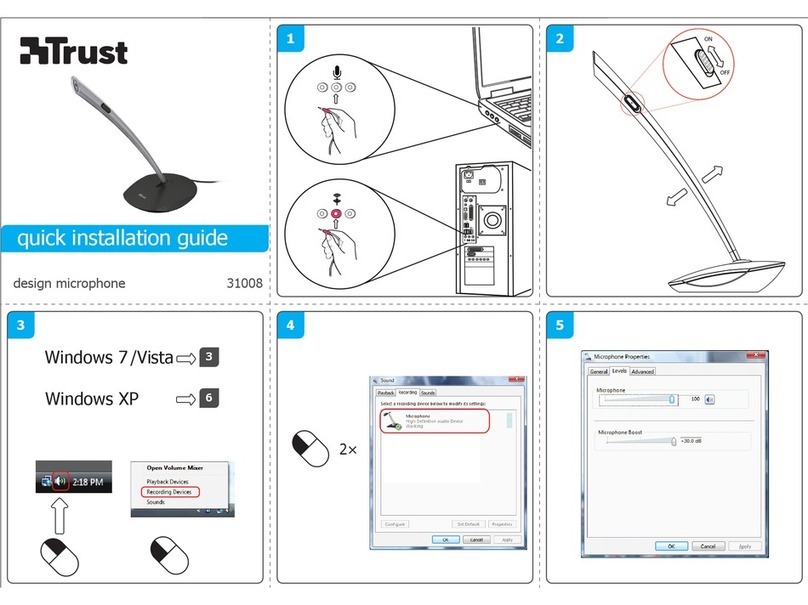23.9
mm
g-27THREAD"f42,1
mm
4
05/16
IN)
(1-23/32 IN.)
OVERALL
DIMENSIONS
FIGURE2
NetWeight (less cable)
425 grams (15 oz)
Packaged Weight
1.07 kg (2 Ib, 6 oz)
RESPONSESELECTION
The Model 540SH SONODYNE@IIfrequency response
can be tailored for low-frequency rolloff or midrange
emphasis as shown in Figure 1. Boththe rolloff and em-
phasisare desirable if the microphone is used for voice
communicationor ina paging system, sincethe tailored
response enhances intelligibility of the speaking voice.
The microphone is supplied with the extended low and
midrange response shown in the solid line curve of
Figure 1. To modify the microphone response proceed
as follows.
A. Provide midrange emphasis:
1.
Hold the microphone in a vertical position; un-
screw (turn counterclockwise) and remove the
microphone grille-capassembly (see Figure 3).
2.
Remove the perforated aluminum resonator plate
(used for extended response); substitute the
18-hole resonator plate (supplied), and add one
spacer (for a total of two).
3. Reassemble the grille-cap to the microphone,
making certain that the cartridge is properly
seated. Tighten securely.
B. Provide low-frequency rolloff:
1. Locate the threaded hole at the back of the
microphone (see Figure3).
2. Use a small screwdriver to remove the headless
No. 4-40 set screw in the threaded hole. Opening
the acoustic port produces the low-frequency
rolloff shown in Figure 1.
rSTEEL SPACERS ACOUSTIC
LLE-GAP
i
1)
REsoNmod GARTwDGEJ fMcRoPHoNE cnse REAR VIEW
PLATE
OF MICROPHONE
RESPONSE
SELECTION
FIGURE
3
IMPEDANCESELECTION
The Model 540SH is supplied connected for low-
impedance operation.The low-impedanceconnection is
recommended where long cable lengths are required or
under conditions of severe hum disturbance. The per-
missible cable length is practically unlimited since
neither response nor level is appreciably affected by
long cables. Shure Model A95 Series Line Matching
Transformers are available for use when a low-
impedance microphone line is desirable but the
associated amplifier hasa high-impedanceinput.These
transformers provide a proper impedance match be-
tween a 19 to 300 ohm microphone line and a high-
impedance input and are available with various input
and output connectors.
To change the Model 540SH to high impedance, pro-
ceed as follows.
1. Remove the two screws that hold the switch.
2. Gently pull the switch and its plastic housing for-
ward out of the swivel taking care not tobreak any
leads.
3. With
a
long-nose pliers, lift upward and discon-
nect the 2-terminalblack plastic impedanceselec-
tion socket from the backof pin3of theaudiocon-
nector. Take care not to break leads while perfor-
ming this operation.
4. With the long-nose pliers, replace the impedance
selection socket with pin3 of the audio connector
inserted in socket terminal "H". Press the plastic
socket firmly in place.
5. Reassemble the switch housing, switch, and
switchplate in the swivel taking care not to pinch
any leads.
6.
Fasten securely with the two previously removed
screws.
CONNECTIONS
When using the microphone in low-impedance, the
BLACKandWHITEcable leadsare the "hot" conductors
for balanced-line connections; the shield is connected
to the chassis or amplifier ground.
When using the microphone in high impedance, the
WHITE cable lead is the "hot" conductor; the shield is
connected to the chassis or amplifier ground. The
BLACK cable lead should be insulated.
PHASING
To test two microphones andlor their cablesfor prop-
er phasing, connect them to an amplifier and talk or
sing into them while holding them three or four inches
apart. The sound from the speakers should be the same
when talking intoeither microphoneor directly between
them if they are in phase with each other. If the sound
drops drastically,or if adead spot isfound when talking
between the two microphones, either the microphones
or their cables (low impedance only) are out of phase.
All cables and microphones should be tested in this
manner toinsurethat they are inphasewith each other.
To change the phaseof a low-impedancemicrophone
cable, either use a Shure A15PRS Phase Reverser or in-
terchange the wires connected to pins
2
and
3
of the
connector. To change the phase of a microphone,
